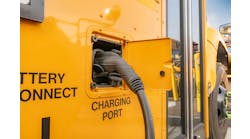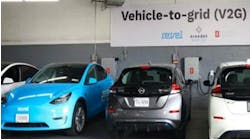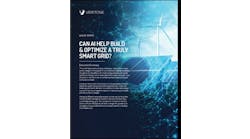A 200-kWh advanced energy storage facility at Texas Electric Cooperatives’ Master Distribution Center in Georgetown, Texas is designed to help its 75 member co-ops learn about the benefits of energy storage — and tap into a special pricing deal with a vendor.
“Our project here at our Georgetown facility will provide an up-close opportunity for our members to see this technology at work,” said Archie Lopez, director of strategic initiatives for Texas Electric Cooperatives (TEC). “They will be able to see the equipment and software in a real-world application and any lessons learned here will assist our members in finding the right application of this technology for their customers.”
TEC partnered with Advanced Microgrid Solutions — which installed and operates the system — to offer services to the co-ops at “preferred pricing,” according to AMS. Lopez said TEC doesn’t know how many co-ops will acquire storage systems, and that all the co-ops are very different from each other, with differing needs.
The storage system at the 160,000-square-foot Master Distribution Center will reduce TEC’s peak demand and provide support to the electric grid.
Energy storage helps meet the goals of the co-ops, said Lopez.
“Electric cooperatives exist to serve their members with safe, reliable electricity delivered in a cost-effective manner. Because battery storage has a variety of applications to help meet those goals, cooperatives are well-suited to explore the opportunities battery storage may have for their systems,” he said.
The Georgetown storage system will be financed and owned by AMS and AMS and TEC will share the savings generated by the storage system, said Manal Yamout, vice president of policy for AMS.
“The primary revenue stream to finance it will be demand charge savings on energy bills,” she explained. “We are sharing in the energy bill savings with the customer.”
She noted that the financing arrangements differ from host to host, and couldn’t reveal the details of the TEC contract. However, she provided details about another deal to illustrate the contracts AMS signs with clients.
The Inland Empire Utilities Agency in southern California has a contract with AMS for a 3-MW system plus 3.5 MW of solar, 1 MW of wind and 2.8 MW of biofuel cell generation. This system is expected to reduce peak energy demand up to 15 percent, according to materials provided by AMS.
In the Inland Empire case, expected savings are $68/kW/year. The utility and AMS split the savings 50 -50 under the agreement.
Eliminating need for T&D upgrades
Such agreements should be appealing to Texas co-ops because they often delivery energy over long distances. When they compare the costs of storage with transmission and distribution (T&D) upgrades, “batteries start to look more appealing,” said Yamout.
The batteries can eliminate T&D upgrades because utilities can install battery systems in areas of constrained loads, she said. “In an urban area, where there’s no room for more generation, we put it exactly where they need it on the grid, several batteries grouped together so the utility can have control.”
The co-ops have been offered discounts for such systems, but AMS declined to reveal how big the discounts are.
“We buy batteries in bulk,” said Kate Sherwood, who runs the AMS Texas office. “For example, we have partnered in the past with Tesla for 500 MWh. That aggregate buying power is what TEC already does. We’re providing that group buying capability to the members.”
She added that while the co-ops haven’t said whether they’d add renewable energy to the storage, solar is a good idea in Texas.
“It’s a great value proposition to combine solar and storage in Texas. There’s more solar under development in Texas than in any other state other than California,” she said.
Read more stories about the benefits of energy storage by subscribing to the Microgrid Knowledge newsletter. It is free.







